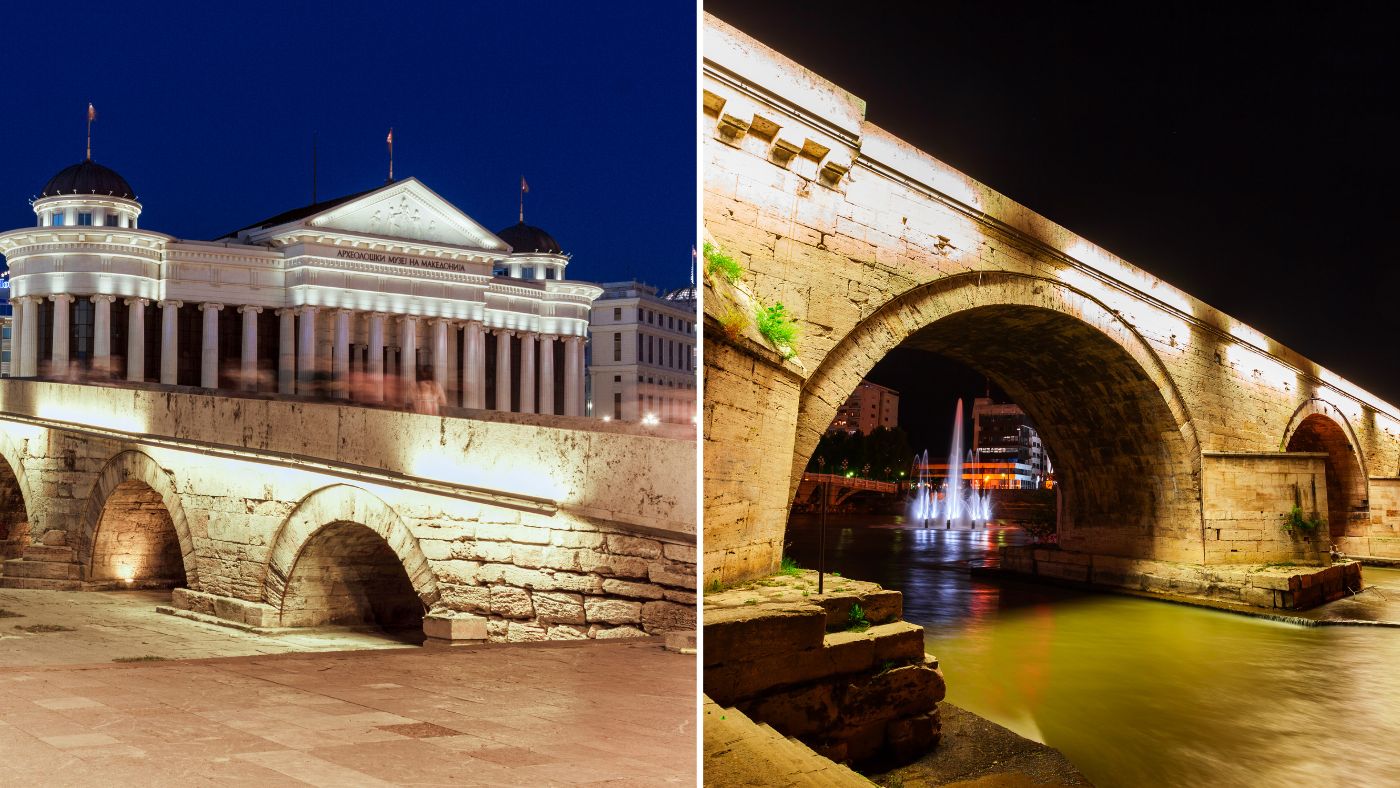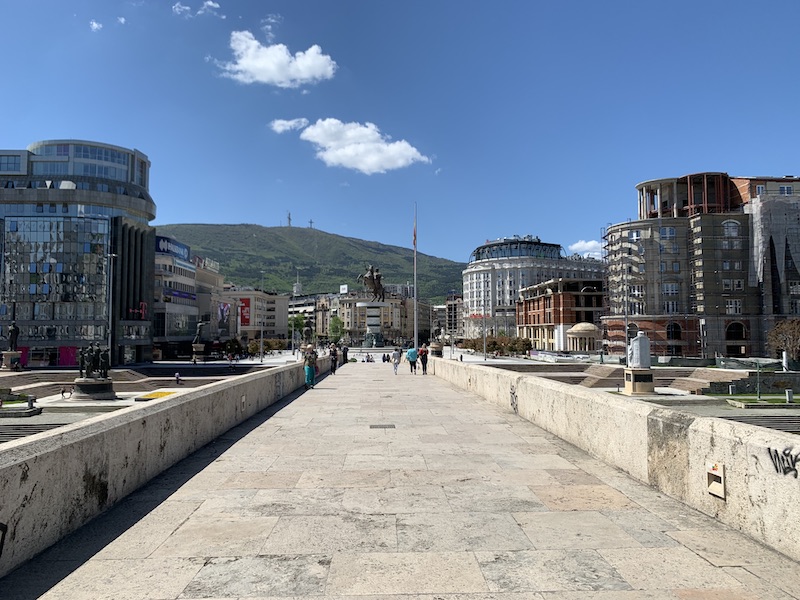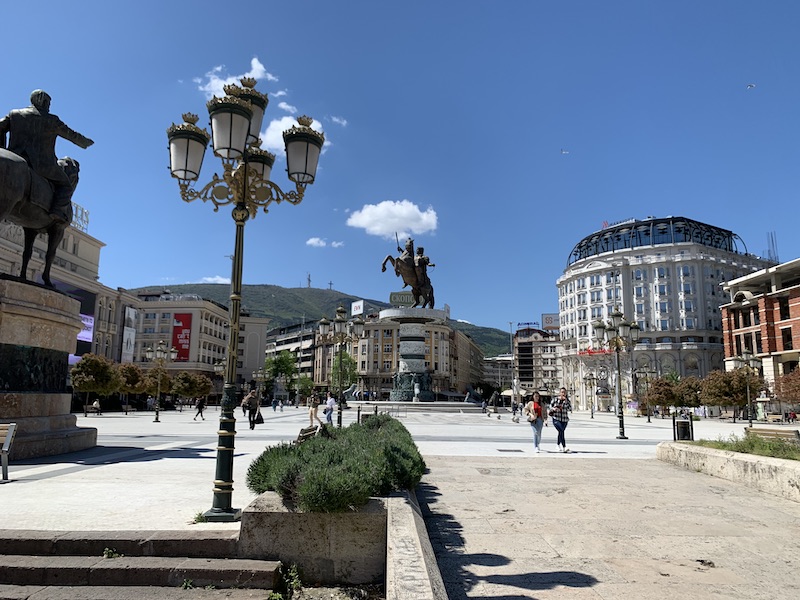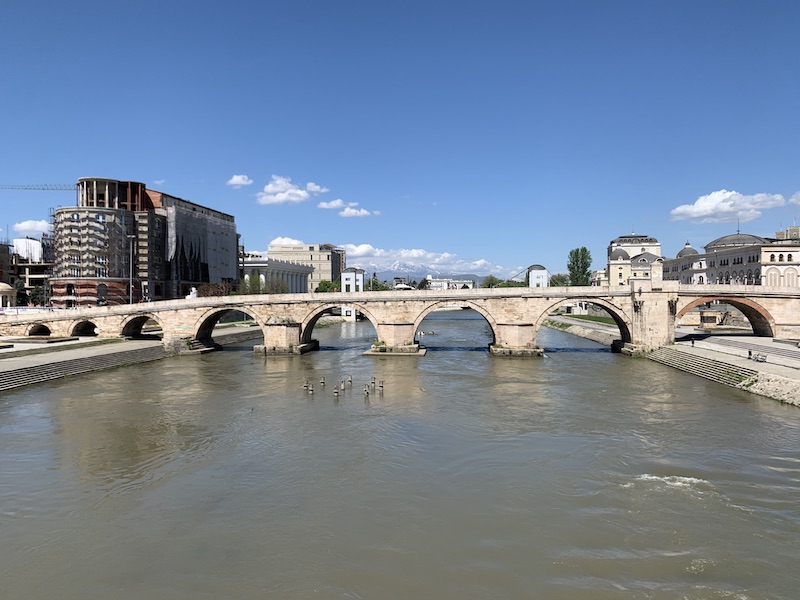The Stone Bridge in Skopje, North Macedonia, is a historic bridge that spans the Vardar River and connects the old town of Skopje with the new part of the city.
The bridge is a prominent feature of Skopje’s cityscape and is considered to be a symbol of the city.
In this article, we will explore the history of Stone Bridge in Skopje as well as answer some frequently asked questions about the bridge.

The History of Stone Bridge
The history of the Stone Bridge dates back to the Roman period when Skopje was a major Roman city known as Scupi.
It is believed that the Romans constructed the first bridge over the Vardar River at this location.
The original Roman bridge was made of wood and was likely used for both military and civilian purposes.
It is not exactly clear who built the original Stone Bridge in Skopje, North Macedonia.
The bridge is believed to have been constructed during the Roman period when Skopje was known as Scupi.
The Romans likely built the first bridge at this location, using wood as the primary construction material.
The Byzantine Period
During the Byzantine period, it is said the Roman bridge was replaced by a new stone bridge.
The Byzantine bridge was built in the 6th century AD and was one of the largest and most impressive bridges in the region at the time.
The bridge was adorned with marble columns and had four arches, each supported by a sturdy pillar.
Skopje During the Byzantine Period:
The Byzantine Empire was a medieval Eastern Roman Empire that lasted from the 5th to the 15th century.
Skopje, the capital of modern-day North Macedonia, was a part of the Byzantine Empire for much of this time.
Skopje remained an important city during the Byzantine period and was a center of trade and commerce.
The city was also an important religious center, with several Byzantine churches and monasteries located in the area.
The Ottoman Period
In the late 14th century, the Ottoman Empire conquered Skopje, and the Stone Bridge became an essential part of the city’s infrastructure.
The Ottomans repaired and strengthened the bridge, and it continued to serve as a major thoroughfare for both pedestrians and vehicles.
In the 19th century, the Stone Bridge was once again renovated and rebuilt.
This time, the bridge was made even wider and reinforced with additional pillars and arches.
Stone Bridge in the 20th Century
In the early 20th century, Skopje experienced significant population growth and industrialization.
The Stone Bridge became increasingly crowded and was unable to handle the growing foot traffic.
In order to address this problem, the city decided to build a new bridge downstream from the Stone Bridge.
The new bridge, known as the Bridge of Civilizations, was completed in 2010 and now carries most of the vehicular traffic across the Vardar River.
The Stone Bridge Today…
Despite the construction of the new bridge, the Stone Bridge remains an important landmark in Skopje.
It continues to be a popular gathering place for locals and tourists alike, and is often used as a venue for events and festivals.
The bridge is also a popular spot for taking photos and enjoying the views of the city.
Today, the Stone Bridge is a protected cultural heritage site and is considered to be one of the most important historical landmarks in Skopje.
It is a reminder of the city’s rich history and serves as a symbol of its enduring spirit and resilience.
NB: It’s also one of the best locations to take some Instagram pictures.
Frequently Asked Questions:
To close this off, here are some questions travelers to Skopje might have about the Stone Bridge include:
Is the Stone Bridge still in use?
Yes, Stone Bridge is still used, but it is used primarily by pedestrians and cyclists.
Is there a fee to visit Stone Bridge, or is it free to access?
No, the Stone Bridge is free to access at any time.
You can cross it to get to the Old Bazaar across from the main Square in Skopje as well as to enjoy the views of the surrounding mountains, including Vodno and the Millenium Cross.

Is the Stone Bridge accessible to people with mobility challenges, such as wheelchair users?
Yes, the Stone Bridge is accessible to people with mobility challenges.
The bridge has ramps on both ends and is designed to be wheelchair friendly.
However, it may still be difficult for some wheelchair users due to the unevenness of the bridge’s surface.
Additionally, there are no handrails along the entire length of the bridge.
Is Stone Bridge safe at night?
Yes, the Skopje Bridge is generally safe at night.
However, as with any public space in a metropolitan area, it is always best to take precautions and remain aware of your surroundings.
Additionally, be sure to avoid walking alone if possible.
If you need to cross the bridge at night, it is best to do so in groups.
Also, avoid carrying valuable items that might attract unwanted attention.
Finally, be sure to follow any posted guidelines for safety and security.
As long as you take these precautions, crossing the bridge should be safe and pleasant.
Also, Skopje is pretty much a safe city.
I’ve never had any problems here.
As long as you’re sensible, you should be absolutely fine.
Are there any interesting sights or landmarks to see near the Stone Bridge?

There are several interesting sights and landmarks to see near the Stone Bridge.
Some of the nearby attractions include:
The Old Bazaar: Located just steps away from the Stone Bridge, the Old Bazaar is one of the oldest and largest marketplaces in the Balkans. The bazaar is home to numerous shops, restaurants, and cafes and is a great place to explore and experience the local culture.
The Skopje Fortress: Located on a hill overlooking the city, the Skopje Fortress is a historic fortress that dates back to the Byzantine period. The fortress offers panoramic views of the city and the surrounding countryside and is a popular spot for tourists to visit.
The Millennium Cross: Located on the top of Mount Vodno, the Millennium Cross is a massive 66-meter tall cross that was built to commemorate 2,000 years of Christianity in North Macedonia. The cross is visible from much of the city and is a popular spot for tourists to visit.
The Museum of North Macedonia: Located in the center of Skopje, the Museum of North Macedonia is a must-see attraction for anyone interested in the history and culture of the country. The museum features a wide variety of exhibits, including artifacts from the Roman, Byzantine, and Ottoman periods.
The Mother Teresa Memorial House: Located in the heart of Skopje, the Mother Teresa Memorial House is a museum dedicated to the life and work of Mother Teresa, who was born in Skopje. The museum features exhibits about Mother Teresa’s life and her charitable work and is a popular spot for tourists to visit.
This guide was first published on December 8, 2022 and was last updated on March 15, 2024. For more information, please contact us at contact@skopjeguide.com.

